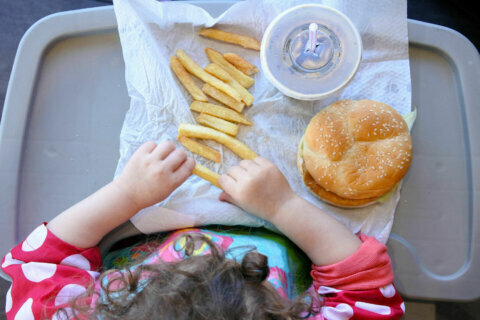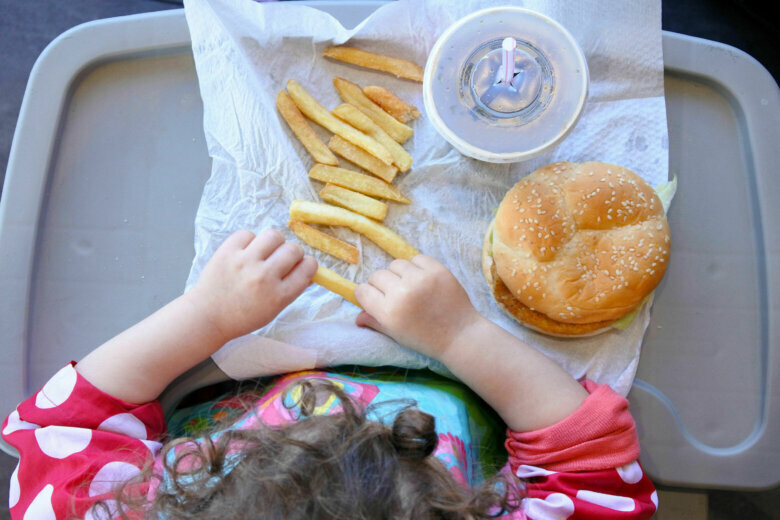
For some families, the pandemic has thrown a wrench in healthy eating plans due to stress from remote work, e-learning, money problems, sickness and more.
While half of surveyed parents reported their family has eaten home-cooked meals more often since the pandemic started, 20% of parents said their family has had fast food more often, according to a new poll published Monday.
More than 2,000 parents participated in the University of Michigan Health C.S. Mott Children’s Hospital National Poll on Children’s Health, which surveyed parents with at least one child between the ages 3 and 18.
“We know families’ lifestyles can impact children’s diets, and we looked to see how the pandemic may have changed their eating habits,” said Dr. Gary L. Freed, the poll’s codirector and a pediatrician at C.S. Mott Children’s Hospital, in a statement.
Reports of kids consuming fast food at least twice weekly were more common among parents who had lower incomes and those who thought their child was overweight. Parents with lower incomes were more likely than those with higher incomes to say their child is overweight.
“There is convincing data that regular consumption of fast food predisposes children to gaining unwanted weight,” said Dr. Maya Adam, a clinical assistant professor of pediatrics at Stanford University in California, who wasn’t involved in the report, via email. “Parents love their kids, so they are often the first to notice potential health issues.”
For these parents, “the demands and stress of daily life required compromises,” the report’s authors wrote.
Most parents agreed that fast food is unhealthy for their children, more expensive than making meals at home and not good value for the money spent. Still, 72% of parents thought that when pressed for time, fast food is a good family option, and 84% thought fast food was fine in moderation.
“We have loudly and clearly received the message that cooking is just too complicated, too time-consuming — and that heavily processed (fast) food is the answer,” Adam said. “We also fall into habits with regard to our eating: If we get used to ordering all of our meals from fast food restaurants, it feels uncomfortable and difficult to get out a pot and boil some water for a simple pasta with veggies and cheese.”
When ordering fast food, 88% of parents let their child choose what they wanted and few parents read the nutritional information, the report found. But more than half of parents still encouraged their child to choose healthier options or tried to limit foods such as fries and milkshakes. Children considered overweight by their parents were more likely than children considered “right-weight” to have a soft drink or soda with their fast-food meal.
“One fast food meal often exceeds the recommended fat, sodium and calorie intake for the entire day without providing many nutrients,” Freed said. “Consuming sugary drinks poses a real health risk to both kids and adults. It increases children’s risk of excess weight gain and tooth decay, and preventable conditions such as obesity.” In many fast-food meals, sugary drinks are the largest source of calories, according to the report.
Tips for choosing better or cooking more
Any food is usually fine to consume in moderation, Adam said, but “the tricky thing with fast food is that it’s very difficult to consume in moderation.”
“The typically large portion sizes don’t support moderate consumption and secondly, many highly processed foods are engineered to be almost addictively tasty,” she added. “They can trigger a reward pathway in our brains … This often keeps people coming back for more. That means good business for the fast-food industry but bad news for our children’s health.”
Some parents said barriers to having home-cooked meals were being too busy or stressed. Additionally, homemade food might be less feasible for families without a car or a nearby grocery store, the authors wrote.
If you sometimes need to rely on fast food but want your kids to eat healthier, encourage them to order milk or water instead of soda, Freed said. Some fast-food restaurants offer grilled chicken nuggets, fruit cups or apple slices in addition to the fried food options.
“Parents of younger children should certainly be reading the labels and ultimately making the decisions but as kids get older, educating them about how to read nutrition labels can empower them to be more informed consumers throughout their lives,” Adam advised.
When encouraging certain food choices in general, try to do so without planting seeds for eating disorders, body image issues or perceptions of foods as good versus bad. The best way to do this is by modeling sensitive, balanced and positive eating habits, which your kids are likely to copy, Adam said.
If you want to feed your children more homemade meals but face transportation- or finance-related barriers, consider our detailed guide on how your family can eat healthy on a low budget. It includes tips for saving money, shopping for foods that will keep your family fuller for longer, making low-cost recipes, and repurposing ingredients, which could mean fewer trips to the store.
Consider that cooking can increase family time, the authors suggested. “Parents can cook with their younger children, and for older children, they can encourage them to experiment in the kitchen on their own or take a turn in preparing a family meal,” they wrote. “Although it may take extra time to prepare food with children or teens, it is also an opportunity (to) share an experience or to learn something new together.








